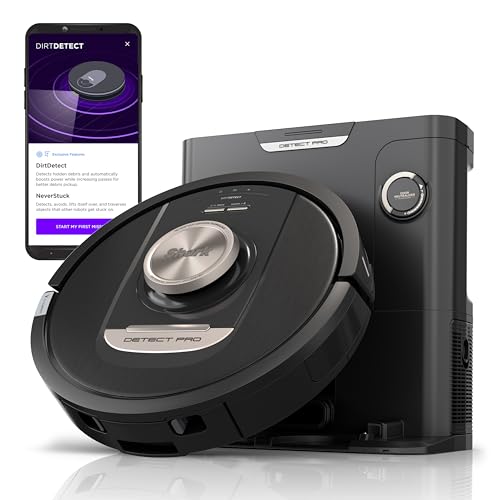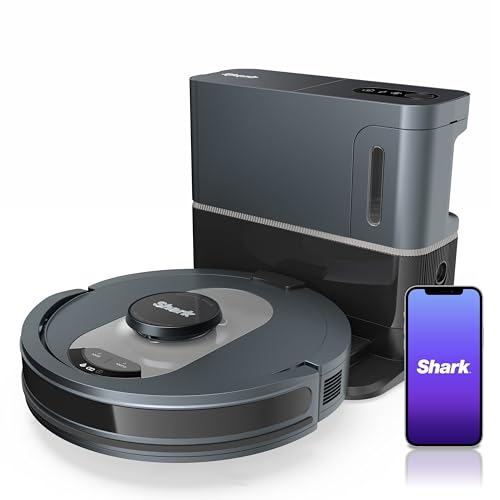How to Take Care of a Robot Mop and Vacuum
A robot vacuum or mop can save you time when cleaning. They also require regular maintenance such as emptying the dustbins and washing the disposable cleaning pads in conformity with the manufacturer’s guidelines, or removing the single-use ones and keeping the sensors clean.
App integration allows you to set schedules and power modes, as well as save maps and change settings.
1. Empty the Dirt Bin
Regular maintenance is required for most robot vacuums and mops. This includes emptying dirt bins and washing pads and keeping track of the replacement consumables. The more you take care of these parts, the longer your robot mop and vacuum will last. Certain cleaning robots require some extra attention, especially those with water tanks.
First, empty the dustbin completely following each cleaning session. This is one of the simplest tasks you can accomplish, but it is essential to the efficient operation of your robot. It is also important to keep your filter clean regularly. Consult the user manual for your specific model to determine how often and how you should clean the filter.
While the mopping feature on your robot may eliminate dust from your floors, there are some small particles that can accumulate in cracks and gaps on flooring. These include skin and hair particles like dandruff, mites dirt and pet hair. To keep these particles from causing health issues it is essential to make use of a vacuum cleaner or sweeping robot to clean these areas.
In addition, if you intend to use your robot to mop, it is essential to choose a model that comes with top-of-the-line hardware and large water and dust tanks. LEGEE is one of the biggest dust bins and water tank among its competitors. This means you won’t need to stop cleaning to refill the tank.
Do not put vinegar or floor cleaners in the water tank of your best robot mop vacuum combo mop unless have been directed to do this by its manufacturer. These chemicals can harm your robot mop vacuum combo and void the warranty.
A robot vacuum and mop is an excellent tool to free up time, so you can spend it on more important things like your family or work. However there are some dirt and stains that are too difficult for the robot to take on. It is also essential to regularly conduct a thorough cleaning session yourself with an ordinary vacuum cleaner to remove the tougher stains and clean areas that your robot will not be capable of reaching.
2. The Cleaning Pads
Depending on the use you’ll be using your mop robot for the pads could become stained or dirty. It’s crucial to clean the cleaning pads regularly. This can be done by throwing them in the washing machine with a regular load of laundry, or hand-washing them. Avoid using fabric softener and dryer sheets because they reduce the absorbency of the pad and cause it to fail.
If your robot mop also doubles as a vacuum cleaner, it will require its dust bin to be emptied and cleaned periodically. Hybrid models that can vacuum and sweep with dry mops are also affected. Many robot mops come with brush attachments that have to be cleaned.
It is important to rinse the mop pads well to remove any dirt and grime. You can also soak the pads in warm water to help get rid of any stuck-on debris. Once they’re clean, let the pads air dry or place them in the dryer at an extremely low temperature setting. It is recommended to clean your pads every 2 to 3 months.
During the cleaning cycle a vacuum or mop can pick up small items that could cause damage to the sensors of your robot. You can avoid this by wiping the sensors clean with a microfiber cloth from time to time. This will help the robot move around the room without bumping against furniture or walls.
Most robot vacuums and mops are equipped with sensors on their base which are used to detect obstacles and ensure that the machine isn’t caught in tight spaces. You’ll need regularly clean them as they are prone to getting blocked by dust and other particles.
Certain robot vacuums have self-cleaning cycles that can be run after every use. You can go to the website of the manufacturer to determine whether this feature is available on the model you have. This process can take between two and three minutes. It can be run through an app or button located on the robot. This cycle should be performed frequently on a cleaning robot vacuum or mop to maintain the efficiency of sensors and other components.
3. Clean the Charging Station
The majority of robot mops spray water or cleaning solution directly onto the floor to soften stains and then scrub them off using a scrubbing pad. Some mop pads are disposable and others are designed to be cleaned and reused. If you decide to use disposable or reusable mop pads it is important to empty and wash them between cleaning sessions in accordance with the manufacturer’s instructions. It’s recommended to drain the mop base or docking station dry between uses in order to stop mildew from developing.
Robotic mops, as well as vacuum cleaners, require frequent maintenance to ensure they run smoothly. This includes emptying and washing the dust bins, as well as cleaning the sensors. If you own a robotic mop with a dirt sensor you might need to clean it gently every few cycles to get rid of dirt that could block the sensors and cause mistakes in navigation.
Many robot mops come with an app that lets you to save your house’s maps and set up cleaning schedules and monitor when the machine needs maintenance. If you’re planning on buying mop, make sure you choose one that is connected to Wi-Fi so that you can use the app to control it from anywhere.
A highly rated model, the Samsung Powerbot Vac + Mop is a smart device with features that let it clean floors, without needing to be home. The map function lets you to designate virtual boundaries and no-go zones for the robot. You can also use it to manually direct it to clean a specific area. Its mopping and vacuuming capabilities work on both carpeting and hard floors, making this an ideal choice for homes that have both.
This 2-in-1 robot comes with an intelligent object avoidance sensor that helps it navigate around objects like furniture. It also has a self-emptying bin that reduces the amount that needs to be cleaned after each use. It can be programmed to operate when you are away which is great for busy homeowners. It is also quieter than other vacuums. This is ideal for parents or pets that are sensitive to noise.
4. Clean the Sensors
Most robot vacuums and some mop-and-vacuum combination models come with an application that lets you design automatic cleaning schedules, set cleaning settings and check when the device needs maintenance. You can also utilize the app to begin cleaning robot Mop and vacuum, stop and manually clean your robot from any place within your home, as well as modify the settings on it.
The app is particularly beneficial if the robotic cleaner includes mapping capabilities, like lasers, cameras or optical dToF. This allows it to save the map of the room, and move through furniture. These features can also help reduce the amount of stains that appear on your floor, which makes your cleaning chores much less labor-intensive.
If the sensors that map your robot’s location get dirty, it could have trouble finding its way around your home. It is essential to clean these sensors frequently like you would a camera lens or smartphone screen. The best robot vacuum mop hybrid way to do this is by using a clean, dry cloth. If you use a moist cloth or cleaner, you may damage the sensors and cause malfunction.
It’s also a good idea for you to clean your robot vacuum brushes frequently. This will help to stop hair tangles from forming and clogging of the motor. It also makes it easier for your robot vacuum to pick up debris. It’s also a good idea to clean your primary roller brush since it’s typically responsible for removing dirt and can build up lots of dust over time.
 Also, make sure you only use the cleaners suggested by the manufacturer of your robot. Other floor cleaners could damage your robot and void its warranty. Most brands suggest using the combination of vinegar and water, or a cleaning solution that is specifically formulated for their robot. Never pour in hot water or a solution that contains abrasives since they can damage internal components and leave a messy dirt on your floors. Check out the owner’s manual for more detailed instructions on how to clean your robot cleaner. This will help ensure it operates properly and lasts longer.
Also, make sure you only use the cleaners suggested by the manufacturer of your robot. Other floor cleaners could damage your robot and void its warranty. Most brands suggest using the combination of vinegar and water, or a cleaning solution that is specifically formulated for their robot. Never pour in hot water or a solution that contains abrasives since they can damage internal components and leave a messy dirt on your floors. Check out the owner’s manual for more detailed instructions on how to clean your robot cleaner. This will help ensure it operates properly and lasts longer.
